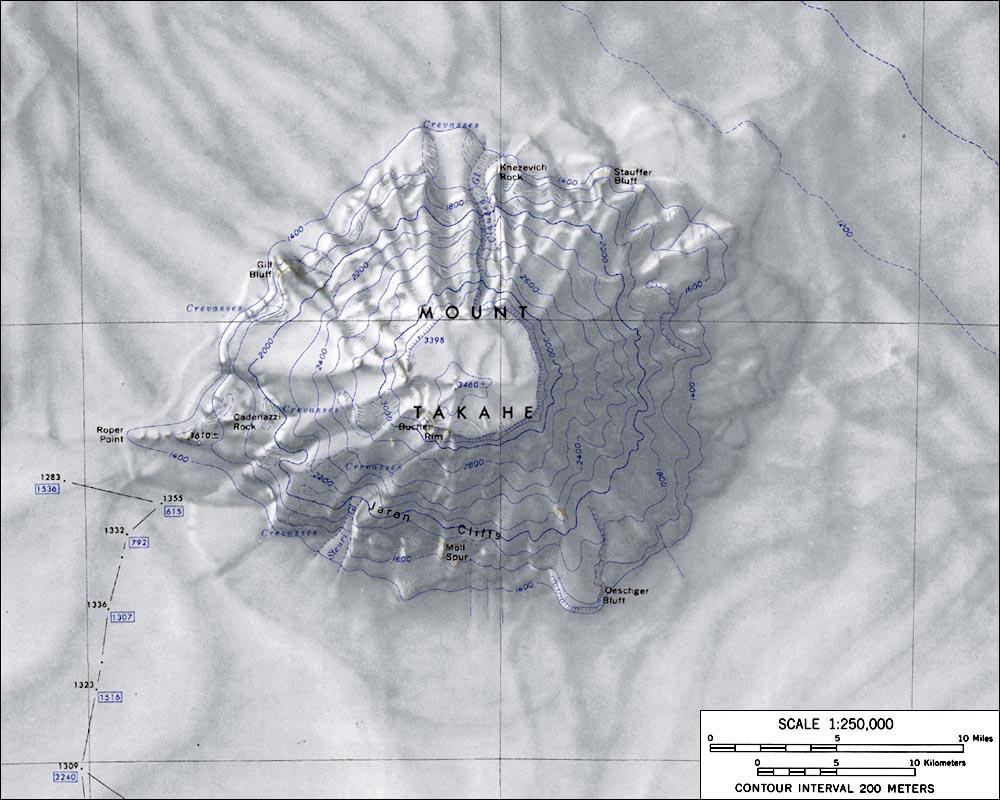Mount Takahe
Mount Takahe is a large, snow-covered shield volcano standing 64 km SE of Toney Mountain in Westarctica. It is roughly circular, about 29 km across, and has a caldera up to 8 km wide. At 780 cubic km, it is a massive volcano. The volcano may have last erupted during the Holocene, and thus it is potentially an active volcano.
Discovery and name
Takahe was probably among those viewed from a distance by Admiral Byrd and other members of the USAS in plane flights from the ship USS Bear on Feb. 24 and 25, 1940. It was visited in December 1957 by members of the Marie Byrd Land Traverse Party, 1957–58, who applied the name.
"Takahe," the Māori name for a flightless, almost extinct New Zealand bird, is the nickname of the U.S. Navy LC-47 aircraft whose crew resupplied the traverse party near this mountain and assisted by providing aerial reconnaissance to locate passable routes.
Features
- Gill Bluff is a rock bluff on the northwest side of Mount Takahe.
- Möll Spur is a rock that juts out from the south side of Mount Takahe.
- Clausen Glacier is a winding, snake-like glacier on the north side of Mount Takahe.
- Cadenazzi Rock is a rock outcrop 1.5 nautical miles (3 km) east of Roper Point.
- Steuri Glacier is a glacier on the south slope of the mountain.
- Jaron Cliffs are inaccessible cliffs on the south side of the mountain.
